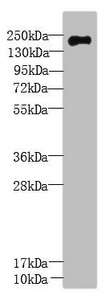E3 ubiquitin-protein ligase which is a component of the N-end rule pathway. Recognizes and binds to proteins bearing specific N-terminal residues that are destabilizing according to the N-end rule, leading to their ubiquitination and subsequent degradation. Plays a critical role in chromatin inactivation and chromosome-wide transcriptional silencing during meiosis via ubiquitination of histone H2A. Binds leucine and is a negative regulator of the leucine-mTOR signaling pathway, thereby controlling cell growth. Required for spermatogenesis, promotes, with Tex19.1, SPO11-dependent recombination foci to accumulate and drive robust homologous chromosome synapsis. Polyubiquitinates LINE-1 retrotransposon encoded, LIRE1, which induces degradation, inhibiting LINE-1 retrotransposon mobilization. Catalyzes ubiquitination and degradation of the N-terminal part of NLRP1 following NLRP1 activation by pathogens and other damage-associated signals: ubiquitination promotes degradation of the N-terminal part and subsequent release of the cleaved C-terminal part of NLRP1, which polymerizes and forms the NLRP1 inflammasome followed by host cell pyroptosis.







